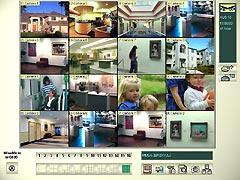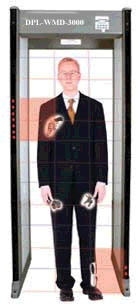Safety and Security at School

ISSUE: What technologies are schools adopting into their current security plans?
SOLUTION: Access Control Systems -- access systems provide a higher level of security in areas where expensive equipment is located, such as in computer and science labs and audio-visual rooms.
 Surveillance cameras are becoming more commonplace on school campuses. One example is a small urban school district in the Midwest, which has placed more than 750 cameras throughout its two high schools.
Surveillance cameras are becoming more commonplace on school campuses. One example is a small urban school district in the Midwest, which has placed more than 750 cameras throughout its two high schools.Cameras can be programmed to record continuously or only when motion is detected. Many schools prominently display monitors near main entries to let students and visitors know immediately that they are under surveillance. That alone is enough to deter many would-be vandals or other troublemakers. Most schools are using the cameras to monitor hallways, cafeterias, gyms and hidden areas that are attracting problem behaviors.
Analog VCRs are being replaced by DVRs for recording video . DVRs offer faster image retrieval, better image quality and increased storage capability as compared to VCRs. Also, by using e-mail or the Internet, DVRs allow for the sharing of digital video with local law enforcement agencies -- an advantage not possible with videotape.

This means that school administrators, using either the Internet or the school's intranet, can pull up and review images from schools far from the main office. This is a major plus also made possible by the fact that many schools today have the IP infrastructure to carry digital video.
Metal detectors can be a valuable addition to a school's security effort to keep weapons off campus. However, there are several downsides to the use of the technology to consider, including:
* Most schools have multiple entries and posting metal detectors at each could be costly.
* Student arrival times may have to be staggered as metal detectors slow entry onto the campus.
* To be effective, the equipment must be monitored. This takes security personnel away from other duties or requires the hiring of additional staff.
Some districts still view metal detectors as a good investment and choose either a free-standing metal-detection portal, which students walk through upon entering the school grounds, or detection wands that are used for scanning incoming students.

Also consider a system's scalability -- that is its ability to grow and expand as needs change. Look for an open architecture system, in which every major system component is designed according to industry standards. This is important because it enables interoperability and integration with equipment made by various manufacturers. Also, do not forget service, support and product warranty. A software support agreement also should include software enhancement updates, as well as software maintenance and firmware updates.
At DPL-Surveillance-Equipment.com we can help a single school or an entire district get the most protection for the money spent.

0 Comments:
Post a Comment
Note: Only a member of this blog may post a comment.
<< Home